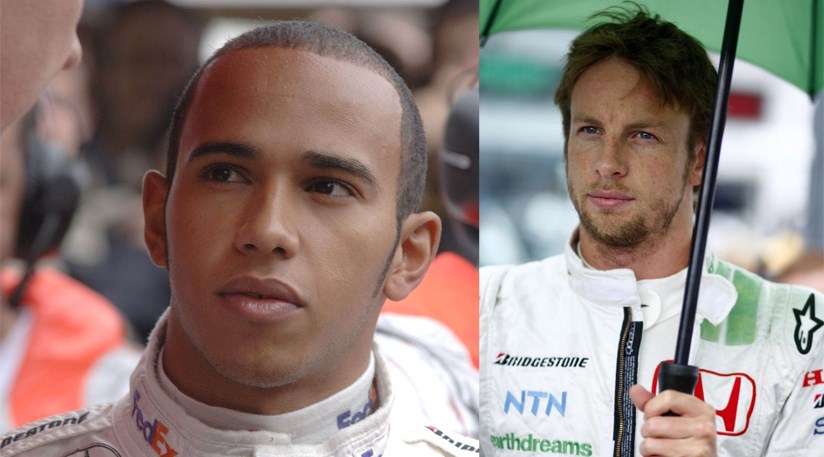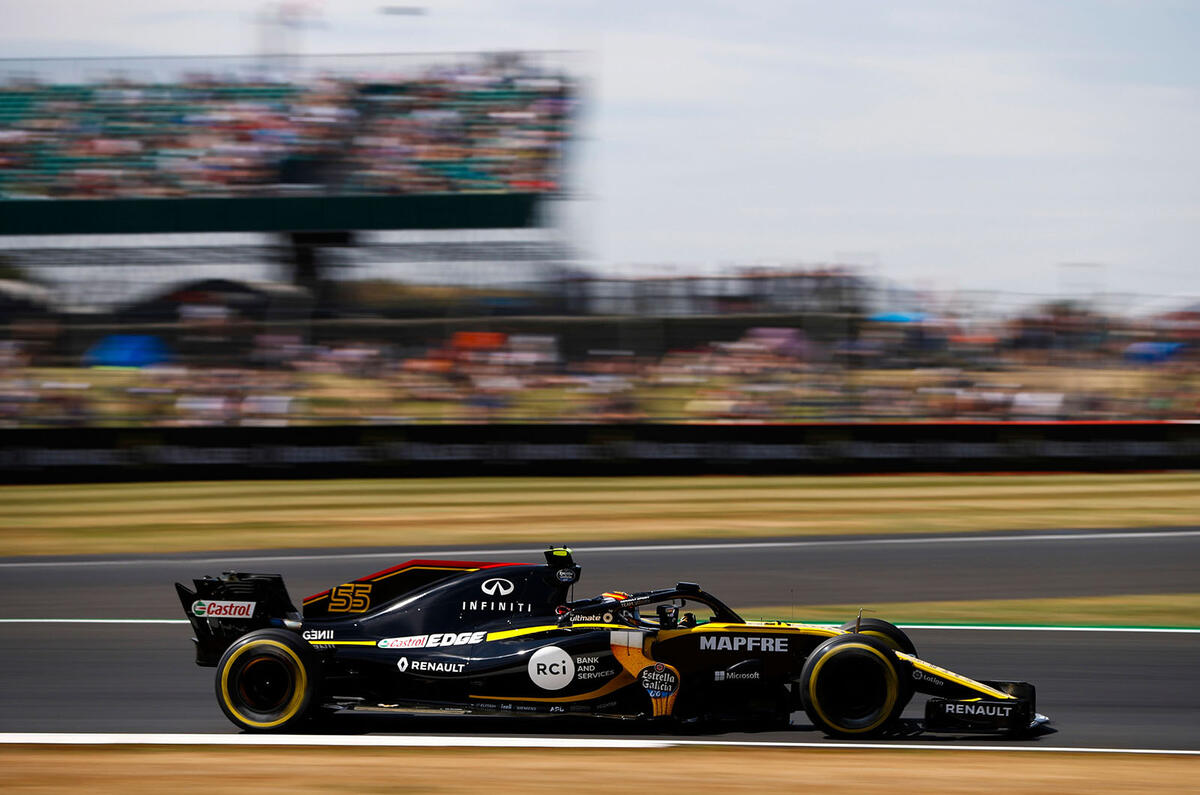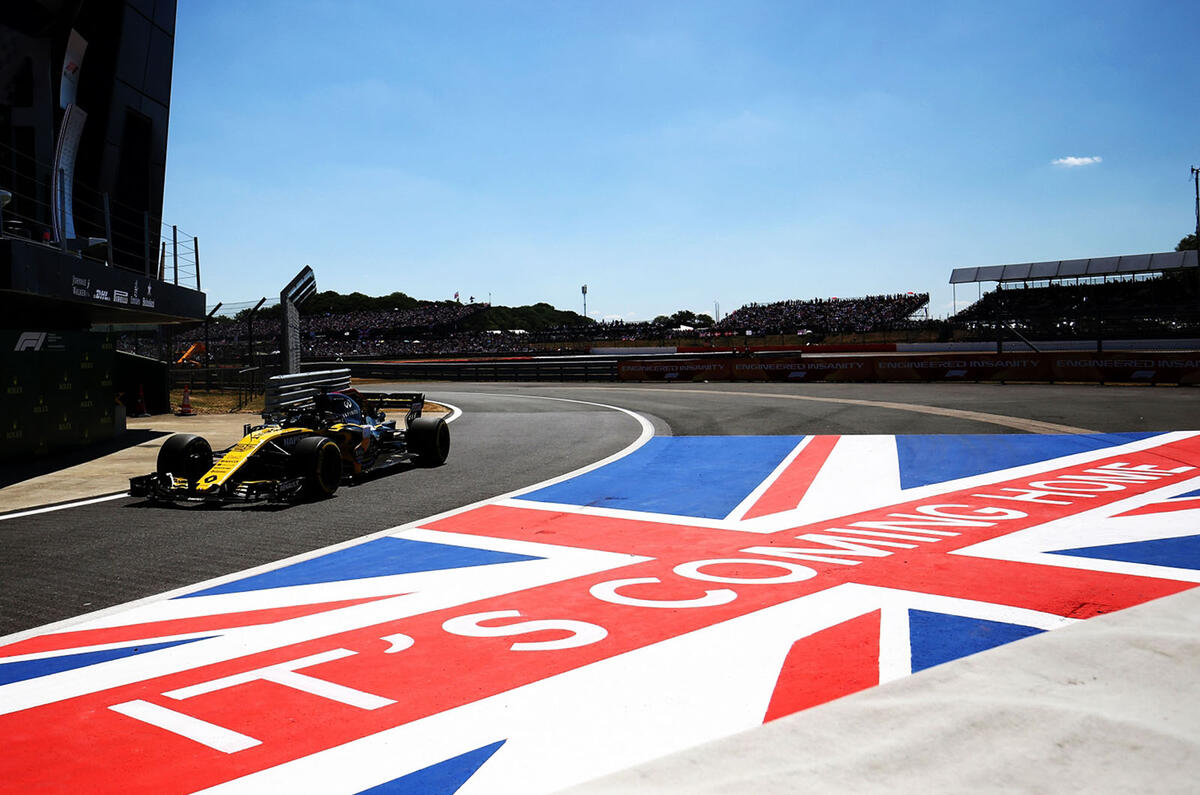See 2014 season, 2015 season, 2016 season, 2017 season, 2018 season, 2019 season, 2020 season, 2021 season and Formula One enginesFormula One entered its second turbocharged era in 2014. Australia was the location of the end of the first era and start of the second . The series is being run under the most radical engine regulation changes since 1995. All cars entering any Formula One championship race must run with 1.6-litre single turbocharged 6-cylinder engines with a rev limit of 15,000 rpm and maximum fuel flow of 100 kg/hr. New car regulations will also be enforced, and the minimum weight regulations will be raised from 642 kg to 690 kg . Ferrari, Mercedes and Renault produced engines from 2014 with Honda producing engines from 2015; Cosworth did not participate from 2014 and beyond.
In-season engine development returned; the previous V8's development was frozen. Since 2017 new rules about aerodynamics and the consistent improvement of the engines, that now reach around 1000 hp, have made the cars finally faster than the 2004 ones, breaking numerous track records. The most significant system introduced in F1 was the Kinetic Energy Recovery System , a system that stores energy, created by braking, through a flywheel; this energy is then channeled to the car's drivetrain to increase acceleration. A few well-funded teams had tested this technology the previous year but it remained too experimental; all of the teams' KERS systems needed more development, so none of them would be ready for 2009. Due to the global economic recession, many more rule changes were brought in to reduce the cost of participating in Formula One. Initially a standardised engine was proposed, but this idea was rejected by the teams, who came up with their own cost-cutting measures.
These included a huge reduction in testing times and an increase in the required engine and gearbox mileage. Many teams voiced concerns over the cost of KERS and have suggested a standardised unit, but so far no such opportunity exists. The new rules and regulations saw a new order in 2009, with new teams Brawn GP and Red Bull Racing and their drivers leading the way, with Ferrari and McLaren having a poor season. Also, the major manufacturer teams were starting to disappear rapidly due to the worldwide economy crisis. After the banning of turbocharged engines in 1989, V10 became the most popular engine configuration in Formula One, because it offered the best compromise between power and fuel consumption.
From the 1998 season onwards, all competing teams had V10 engines in their cars. V12s were powerful but thirsty, while V8s were more fuel-efficient but lacked power. 2000 saw the grids of Formula One start to revert to normal, as Jordan rapidly faded out of sight, and Williams, looking forward to a new partnership with BMW started to reassert itself. The fight at the front, however, was very much between Häkkinen and Schumacher, each two-time champion, driving cars closely matched in performance. The 2001 season saw Ferrari start to leave the rest of the grid behind, and Schumacher won the championship by the Hungarian Grand Prix, which tied him as second quickest championship winner with Nigel Mansell.
Michael Schumacher scored more points than the second and third-placed drivers combined, after gaining a podium in all of the races . In this season, he wrapped up the championship at the French Grand Prix , becoming the earliest ever championship winner. Trainers are responsible for creating some of the peculiar-looking exercises that are sometimes pictured on social media, and more often than not these are exercises designed to strengthen a driver's neck muscles.
Lots use resistance bands to mimic the forces experienced in high-speed corners, while others use weighted helmets to perform reps and build muscle mass. Capable of shifting up to 40kg with their neck muscles alone, F1 drivers are thought to have the strongest necks in motorsport. F1 drivers need to be at the peak of their fitness to be able to race. They also need to have really strong neck muscles to be able to withstand the G forces while driving the cars at 350 km/h. Since the start of the 2014 season, the Mercedes team and their drivers Lewis Hamilton, Nico Rosberg and Valtteri Bottas have dominated the sport, winning 111 of the 160 races .
This new technology gave Mercedes and their customer teams many advantages over their competitors due to the need for less cooling and a more compact power unit. In the early 1990s, teams started introducing electronic driver aids, whose use spread rapidly. Active suspension, , semi-automatic gearboxes , and traction control All enabled cars to reach higher and higher speeds provided the teams were willing to spend the money. The FIA, due to complaints that technology was determining the outcome of races more than driver skill, banned many such aids in 1994. However, many observers felt that the ban on driver aids was a ban in name only as the FIA did not have the technology or the methods to eliminate these features from the competition. For 1978 the new Lotus 79 made more radical and mature use of the ground effect concept.
Brabham outbid Lotus in generating downforce with BT46B "fan car", a revival of the "sucker car" concept used by Jim Hall's Chaparral 2J in the Can-Am series in the early 1970s. Late in the season, Ronnie Peterson crashed into the barriers in the first lap at Monza and his Lotus burst into flames. James Hunt heroically pulled him out of the car and the medical prognosis was initially good but the Swede died the next day because of an embolism. Hunt would retire after the following season's Monaco Grand Prix. McLaren built a DFV-powered car and a new force appeared on the scene when Ken Tyrrell entered his team using Cosworth-powered French Matra chassis driven by ex-BRM Jackie Stewart as lead driver.
Clark took his last win at the 1968 season opening South African Grand Prix. On 7 April 1968, the double champion was killed at Hockenheim in a Formula Two event. The first was the arrival of unrestricted sponsorship, which the FIA decided to permit that year after the withdrawal of support from automobile related firms like BP, Shell and Firestone. In the next round at the 1968 Spanish Grand Prix, Lotus became the first works team to follow this example, with Graham Hill's Lotus 49B entered in the Red, Gold and White colors of Imperial Tobacco's Gold Leaf brand. The second innovation was the introduction of wings as seen previously on various cars including the Chaparral 2F sports car. Colin Chapman introduced modest front wings and a spoiler on Graham Hill's Lotus 49B at the 1968 Monaco Grand Prix.
Brabham and Ferrari went one better at the 1968 Belgian Grand Prix with full width wings mounted on struts high above the driver. Lotus replied with a full width wing directly connected to the rear suspension that required a redesign of suspension wishbones and transmission shafts. Matra then produced a high mounted front wing connected to the front suspension. This last innovation was mostly used during practice as it required a lot of effort from the driver.
By the end of the season, most teams were using sophisticated wings. There was several cases of wings, struts, or even suspension collapsing. Lastly, the third innovation was the introduction of a full face helmet for drivers, with Dan Gurney becoming the first driver to wear such helmet at the 1968 German Grand Prix. Lotus won both titles in 1968 with Graham Hill with Stewart second.
In 1961, in an attempt to curb speeds, Formula One was downgraded to 1.5-litre, non-supercharged engines (essentially the then-current Formula Two rules), a formula which would remain for the next five years. Forced induction was still an option, but limited to 750 cc, and no one seriously considered the option, as supercharging had proven limiting to fuel consumption. The considerably more powerful and efficient engine Ferrari had led to the Maranello outfit dominating the 1961 season as the British teams scrambled to come up with a suitable engine. His teammate, Wolfgang von Trips of Germany, died along with 14 spectators in a horrific crash on the first lap of the Italian Grand Prix at Monza.
See 1989 season, 1990 season, 1991 season, 1992 season and 1993 season.In 1989, turbos were banned and new regulations allowing only naturally aspirated engines up to 3.5 litres were put in their place. The dominance of McLaren-Honda continued for the next 3 seasons, Prost winning the title in 1989, Senna in 1990 and 1991. The V10 and V12 engines produced by the Japanese manufacturer proved to be just as good as the turbo V6s before them, and the V10 was the best engine over the two seasons it was used and developed by Honda.
The championship was marred however by the fierce rivalry between the two men, culminating in a pair of clashes at the Japanese Grands Prix of 1989 and 1990. They both dominated Formula One from 1988 to 1990, winning 37 of the 48 Grand Prix staged and each scoring almost twice as many points as the third-place driver in those championships. In 1989 Prost 'closed the door' on his overtaking teammate while Senna later freely admitted to deliberately driving into Prost in the 1990 race, drawing stiff condemnation from all quarters of Formula One.
Do F1 Drivers Have A Weight Limit The number of sessions per week varies depending on the time of year, with drivers using the off-season to recuperate and then build up their fitness for the coming season. "Winter time I train about six days a week," explained Bottas in 2017. As a Formula 1 driver, it's a very unique sport handling the g-forces. You need the right amount of strength in places but also endurance." Red Bull Racing returned to have a great season in 2010, thanks to their hiring of designer Adrian Newey in 2007. They won the Constructors' Championship in the penultimate round in Brazil, and Red Bull driver Sebastian Vettel won the championship in the final round of the 2010 season at Abu Dhabi.
Mercedes GP had a much less successful and winless season than 2009 with their two new drivers – seven-time World Champion Michael Schumacher had returned to Formula One, but was regularly beaten by fellow German, Nico Rosberg. McLaren and Ferrari had better seasons in 2010, finishing respectively second and third among the constructors. The Drivers' Championship was very closely fought, with six drivers leading the championship at various points, in the joint longest ever (nineteen-race) season. For most of the season, the title looked like it could have gone to either Red Bull's Sebastian Vettel or Mark Webber, or either McLaren's Lewis Hamilton or reigning World Champion Jenson Button .
But, the Ferrari of Fernando Alonso clawed back 47 points after the British Grand Prix, to be leading the Drivers' Championship with two races left. A record four drivers were still in contention for the title going into the final round in Abu Dhabi. They did not finish that way though, with Vettel winning the race and the title when the others finished too far down the field.
Vettel became the youngest ever World Champion in the history of the sport. Ferrari was the great favorite with a 3-litre version of his well tested powerful sports car V12 design, but the new cars were very heavy, probably in an excess of self-confidence. An enlarged V6 held some promise but Surtees left mid-season after a dispute with team manager Eugenio Dragoni at the 24 Hours of Le Mans sportscar race.
Coventry-Climax, formerly supplier to much of the field, pulled out of the sport leaving teams like Lotus to struggle with enlarged versions of obsolete Climax engines. Cooper turned to a development of an otherwise obsolete Maserati V12 that was originally designed for the Maserati 250 F in the late 1950s, while BRM made the choice to design an incredibly heavy and complex H-16. The big winner was Jack Brabham, whose eponymous racing team took victory two years running with a light and compact spaceframe chassis powered by the aluminium-block stock-derived Repco V8 unit. With SOHC heads and no more than 330 bhp, the Repco was one of the least powerful of the new 3-litre engines but unlike the others it was light, reliable and available right from the start of the new rules.
1966 was Jack's year, while 1967 went to his teammate, New Zealander Denny Hulme, as Jack tried new parts on his car. No Alfa Romeo, a supporting cast of privateer Lago-Talbot entries and an almost undriveable, unreliable BRM would make Ferrari effectively invincible. The FIA was in an embarrassing position as it had already announced that current Formula One regulations would last until 1954 before switching to 2.5-litre atmospheric engines. Major manufacturers were already working to develop cars for the future regulation and it was obvious that nobody would develop a new car for only two years.
The promoters of the World Championship Grands Prix, mindful of the lack of serious competition for the Alfettas, eventually all adopted Formula Two regulations for two years. However, Ferrari's dominance went on with the light 4-cylinder powered 500s, bringing Italian Alberto Ascari his two championships in the 1952 and 1953 seasons. Ferrari's Formula One cars continued to race very successfully in non-championship Formula One and Formule Libre races through this period.
Ironically, during this period the only World Championship race for which Formula One cars were eligible was the Indianapolis 500. In 1952 Ferrari entered four Formula One 375s with Alberto Ascari as lead driver, but with little success. The Motorcycle World Championships was introduced in 1949.
In 1950, the FIA responded with the first ever official World Championship for Drivers. The championship series, to be held across six of the 'major' Grands Prix of Europe plus the Indianapolis 500, was in effect a formalization of what had already been developing in Grand Prix racing during the previous years. Italian teams of Alfa Romeo, Ferrari, and Maserati were best positioned to dominate the early years. Other national manufacturers – such as the French manufacturer Talbot or the British BRM– competed, although less successfully.
Finnish driver Heikki Kovalainen for example will train his arm muscles to be strong by sitting balanced on a gym ball and holding out a three kilograms weight in front of him like it is a steering wheel. He will then be directed by his personal trainer to turn the wheel left, right or return to centre. This improves muscle strength over long periods of time and reaction times while under the pressure of keeping the weight held out in front of you. Drivers will purposely build up lactic acid in their muscles to help strengthen them to a level which will be required during a race period. The biggest issue for F1 drivers is the intake of proteins. Their training level is high enough, and fat will be burned down towards a constant level, but when your body is out of sufficient supplies of both fat and sugar, it starts using proteins as fuel, and it gets those out of muscles.
Too little of those and you'll burn muscles down, too much and you'll build up muscles. Like Websta pointed out, muscles have 4 times the mass density of fat, so weights 4 times as much. That's a very tricky balance, because on the one hand you need enough muscle mass to cope with driving an F1 car, but on the other you need as less as you can get away with it.
In 2004, Ferrari and Schumacher returned to almost total dominance of the championships, winning both with ease – in the first thirteen races of the season, Schumacher managed to win twelve. A new race in Bahrain made its debut in April and another new race in China debuted in September. It was initially thought that in introducing these new races, older Grands Prix in Europe, like the British Grand Prix, might be removed from the championship, but instead, the number of races was increased to eighteen. According to Ecclestone, the move was to increase Formula One's global reach, though the steady tightening of restrictions on tobacco advertising in Europe and elsewhere may also have been a factor. This move saw the percentage of races held outside Formula One's traditional European home climb to around fifty percent – meaning the World Championship, which visits four of the six continents, truly deserves its name. 2004 was Michael Schumacher's most recent of his record seven World Championships.
Schumacher also holds the record for the most races won – with ninety-one. This was done to ensure that costs were kept down for a competitive F1 team, as well as keeping the skill of driving a Formula 1 car relevant to the driver. However, the use of traction control was still permitted by the FIA, and was used for the next three seasons, until an effort to ban the system led to the FIA finally outlawing it for the 2008 season.
The only major automotive manufacturer with a full works effort was Ferrari- which was really a manufacturer that made road cars to fund its racing in F1 and endurance racing. The only British team that was also a manufacturer of road cars like Ferrari was Lotus; but even so, that company grew considerably but never to the size of Mercedes or Alfa Romeo. People like Cooper and Lotus founders John Cooper and Colin Chapman proved that competitiveness and developing new automotive technology was about fresh thinking, not industrial might. 1958 was a watershed in another crucial way for Formula One.
Against a small field of Ferraris and Maseratis, Stirling Moss won the Argentine Grand Prix driving a mid-engined Cooper entered by the private team of Rob Walker, and powered by a 2-litre Coventry-Climax Straight-4. This was the first victory for a car with the engine mounted behind the driver in Formula One. It was also the first World Championship GP win for a private entrant (excepting the Indianapolis 500 where all the entries were technically private entrants using bought-in chassis). The next Grand Prix in Monaco was also won by the same Cooper car, this time driven by Maurice Trintignant and facing more substantial opposition.
Powered by undersized engines, the Coopers remained outsiders in 1958 but as soon as the new 2.5-litre Coventry-Climax engine was available, the little British cars went on to dominate Formula One. The 1959 season was effectively the start of the mid-engined revolution, and this season saw fierce competition between the works Cooper of Australian Jack Brabham and Moss in the Walker team's Cooper. The Getrag-modified Citroën Traction Avant transaxle proved to be the Achilles heel of the Coopers, so Walker switched to a transaxle manufactured by ex-Maserati engineer Valerio Colotti. The special transmission turned out to be more unreliable than the standard part, and Brabham took the title with Moss second.





























